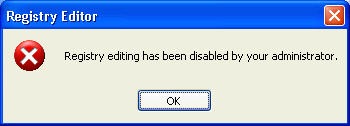
- #LINUX FIREWALL BUILDER LAUNCH APP MAC OS X#
- #LINUX FIREWALL BUILDER LAUNCH APP INSTALL#
- #LINUX FIREWALL BUILDER LAUNCH APP SOFTWARE#
- #LINUX FIREWALL BUILDER LAUNCH APP CODE#
- #LINUX FIREWALL BUILDER LAUNCH APP FREE#
This rule is designed to assure that ssh session over which installer activates new policy does not break or hang. O Administrator can easily define ip address of the management workstation and Firewall Builder will automatically add rule to ensure that ssh access from it to the firewall is always permitted. O It enforces policy structure that denies all traffic by default and only permits what is necessary. * Firewall Builder implements many best practices in firewall policy design and firewall management procedures. Yet, it creates configuration for all supported firewall platforms in their standard format, which makes it easy to integrate with existing automation scripts. You can create configuration, track its changes using built-in revision control system and deploy it to one or several firewall machines. * All configuration management operations can be performed from one central place, Firewall Builder GUI. This provides for both consistent policy management solution for heterogeneous environments and possible migration path. * Being truly vendor-neutral, Firewall Builder can generate configuration file for any supported target firewall platform from the same policy created in its GUI.
#LINUX FIREWALL BUILDER LAUNCH APP MAC OS X#
The program runs on Linux, FreeBSD, OpenBSD, Windows and Mac OS X and can manage both local and remote firewalls. Both network administrators and hobbyists managing firewalls with policies more complex that is allowed by simple web based UI can simplify management tasks with the application.
#LINUX FIREWALL BUILDER LAUNCH APP SOFTWARE#
About Cockpit Project Ideals and Goals Cockpit Blog Blog Feeds Release Notes and Videos Search this site Running Cockpit Installation Documentation Deployment guide Feature internals File a bug in the issue tracker Contributing Contribution overview Get the source Join the mailing list IRC #cockpit on libera.Top Software Keywords Show more Show lessįirewall Builder is a GUI firewall configuration and management tool that supports iptables (netfilter), ipfilter, pf, ipfw, Cisco PIX (FWSM, ASA) and Cisco routers extended access lists. Get startedĪfter installing and enabling Cockpit, visit port 9090 on your server (for example: in a browser on the same machine as Cockpit). Release scheduleĬockpit has a time-based release cadence, with new versions appearing every two weeks.

Once Cockpit is up and running, you can access systems from all major web browsers on any operating system (including Windows, MacOS, and Android).
#LINUX FIREWALL BUILDER LAUNCH APP INSTALL#
You can install Cockpit on the major distributions, including:
#LINUX FIREWALL BUILDER LAUNCH APP FREE#
Free & freeĬockpit is free to use and available under the GNU LGPL.
#LINUX FIREWALL BUILDER LAUNCH APP CODE#
As a result, Cockpit gets easier to use all the time.Īll code changes have tests which must pass before merging, to ensure stability. We test Cockpit with usability studies to make it work the way you’d expect and adjust accordingly. Designed & testedĬockpit’s design keeps your goals in mind. More features appear in Cockpit every release. Inspect detailed metrics that correlate CPU load, memory usage, network activity, and storage performance with the system’s journal.Examine SELinux logs and fix common violations in a click.Spot and react to misbehaving virtual machines.Write your own custom modules to make Cockpit do anything you wantĪlso troubleshoot and fix pesky problems with ease:.Extend Cockpit’s functionality by installing a growing list of apps and add-ons.Switch between multiple Cockpit servers.Use a terminal on a remote server in your local web browser.Inspect and interact with systemd-based services.Manage storage (including RAID and LUKS partitions).Here’s a subset of tasks you can perform on each host running Cockpit: ExtendableĬockpit also supports a large list of optional and third-party applications. It runs on demand, thanks to systemd socket activation. Network-wide logins are also supported through single-sign-on and other authentication techniques.Ĭockpit itself doesn’t eat resources or even run in the background when you’re not using it. It doesn’t reinvent subsystems or add a layer of its own tooling.īy default, Cockpit uses your system’s normal user logins and privileges. IntegratedĬockpit uses APIs that already exist on the system. Cockpit even has a built-in terminal, which is useful when you connect from a non-Linux device. You can switch back and forth between Cockpit and whatever else you like. Keep using the command line, Ansible, and your other favorite tools and add Cockpit to the mix with no issues.Ĭockpit uses the same system tooling you would use from the command line. Have a favorite app or command line tool that you use on your servers?


Basically, you can think of Cockpit like a graphical “desktop interface”, but for individual servers. It’s easy to start containers, administer storage, configure networks, and inspect logs. See your server in a web browser and perform system tasks with a mouse. You don’t have to remember commands at a command-line.


 0 kommentar(er)
0 kommentar(er)
